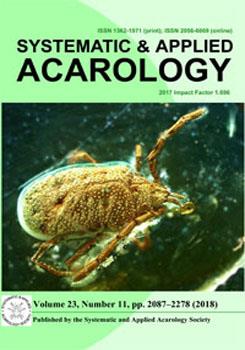Understanding pest species composition and their geographic distribution of important spider mites is fundamental and indispensable to establish an integrated pest management program. From a long-term survey during 2008–2017 in mainland China, we found that Tetranychus truncatus was the most frequently sampled Tetranychus spider mite (48.5%), followed by T. pueraricola (21.2%), T. kanzawai (12.5%), T. urticae (red) (5.7%) and T. urticae (green) (4.5%). Among them, T. truncatus was the major mite pest in the north of China. T. kanzawai was the dominant species in the Middle and Lower Reaches of the Yangtze River Region and T. pueraricola was the most important species in the southwest region. Other common and serious pests include Amphitetranychus viennensis (6.8%) and Panonychus citri (3.8%). This pattern was largely different from that in 2002–2004, when T. urticae (green and red) was believed to be the most serious mite pest. The factors involved in the change of species composition are not clear and need more exploration. We suggested that the increasing corn planting range may be partly responsible for the conversion of dominant species from other spider mites to T. truncatus. Further research on the mechanisms underlying the change of dominant species will help develop integrated management strategies.
How to translate text using browser tools
5 November 2018
Spider mites of agricultural importance in China, with focus on species composition during the last decade (2008–2017)
Peng-Yu Jin,
Lu Tian,
Lei Chen,
Xiao-Yue Hong
ACCESS THE FULL ARTICLE
dominant species
spider mites
T. kanzawai
T. pueraricola
T. urticae
Tetranychus truncatus





